Technology has impacted everyone’s lives one way or another. It’s now easier for people to accomplish different tasks and look for information because of technology. But on the other side of the coin, too much use of technology also has several setbacks, and one of these is children being too dependent on their gadgets. Seeing children play with their peers outside is a thing of the past because they are now glued to their smartphones, laptops, and tablets. If you have been observing the same behavior in your own child, investing in a trampoline can be an excellent idea. Not only will this divert their attention from their gadget, but it can also improve their health in more ways than one.
When you’re a parent, you’d always want the best for your child. You want them to grow healthy so they can enjoy their childhood and make the most of their lives. Aside from preparing healthy meals for your children, you can encourage them to have a healthy lifestyle by buying a trampoline. Here’s how:
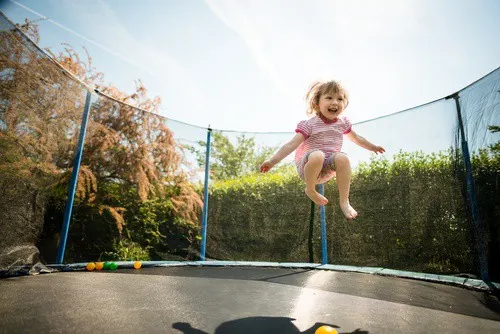
Trampolines and Why They’re A Great Option To Get Kids Active
-
Trampolines can teach your children persistence.
Children will need time for them to get the hang of using the trampoline. They need to practice several times before they can master certain skills of bouncing up and down the trampoline. As a result, children will learn how to be persistent when they’re using the trampoline regularly. Playing the trampoline can be an enjoyable activity, so children won’t mind practicing it every day.
Trampolines can be a great tool for teaching children persistence in several ways.
Here are a few ways trampolines can help:
- Setting goals: Encourage your children to set goals while jumping on the trampoline. These goals can be as simple as learning a new trick or achieving a certain number of jumps in a specific time frame. By setting goals, children learn the importance of persistence and develop a mindset to work towards achieving them.
- Learning new skills: Trampolines provide a fun and safe environment for children to learn new skills. Whether it’s perfecting a somersault or attempting more complex tricks, the process of acquiring new skills on a trampoline requires persistence and practice. Children will experience failures and setbacks, but by persevering and trying again, they can develop a sense of resilience and determination.
- Overcoming fear: Jumping on a trampoline can be intimidating for some children, especially when attempting new and challenging maneuvers. Encouraging them to face their fears and try again can teach them the importance of persistence. By gradually pushing their limits and persisting through initial failures, children can develop confidence in their abilities and become more resilient in the face of challenges.
- Developing physical stamina: Regular trampoline use can improve a child’s physical stamina and endurance. Jumping for extended periods requires energy, effort, and persistence. As children challenge themselves to jump for longer durations or perform more repetitions, they gradually build their stamina and learn the value of persistence in achieving physical goals.
- Fun factor: Trampolines provide an enjoyable and entertaining experience for children. When they are having fun, they are more likely to persist in their activities. By associating persistence with positive experiences and enjoyment, children are more motivated to keep trying, even when faced with obstacles or difficulties.
Remember to prioritize safety while using trampolines by following manufacturer guidelines, supervising children, and implementing appropriate safety measures.

-
Trampolines can improve your child’s self-esteem.
Childhood is an essential stage in a person’s life. How your children develop during this time can significantly impact their lives in the long run. If you want your children to have self-esteem as they grow, invest in a trampoline for them. When your children can master a simple trick on the trampoline, like jumping and then doing a flip in the air, they will be more confident about their physical capabilities, skills, and determination. This simple activity can help them become more confident about themselves and encourage a positive self-image.
Trampolines can contribute to improving a child’s self-esteem in several ways:
- Mastery of skills: Learning new skills and tricks on a trampoline requires practice and effort. As children progressively master these skills, they experience a sense of accomplishment and competence. Each successful jump or new trick learned boosts their self-confidence and contributes to an overall improvement in self-esteem.
- Physical fitness and body awareness: Regular use of a trampoline promotes physical fitness and body awareness. Jumping on a trampoline improves coordination, balance, and overall fitness levels. As children notice their physical abilities improving, they develop a positive body image and gain confidence in their physical capabilities, leading to enhanced self-esteem.
- Overcoming challenges: Trampolining presents various challenges, such as attempting new tricks or pushing one’s limits. By persisting through these challenges and overcoming them, children build resilience and confidence in their abilities. They learn to embrace challenges as opportunities for growth, which positively impacts their self-esteem.
- Peer interaction and social confidence: Trampolines often attract children to play together and engage in group activities. Participating in group trampolining sessions or sharing the joy of jumping with friends can boost a child’s social confidence and enhance their self-esteem. The positive interactions and sense of belonging that trampoline-related activities foster can contribute to a child’s overall self-worth.
- Fun and enjoyment: Trampolines provide an enjoyable and exciting experience for children. Engaging in activities they find fun and entertaining can create a positive emotional state, leading to increased self-esteem. When children associate trampolining with joy and happiness, it contributes to a positive self-perception and overall well-being.
It’s important to note that while trampolines can positively impact self-esteem, it’s crucial to prioritize safety measures and supervise children during trampoline use to prevent accidents or injuries.
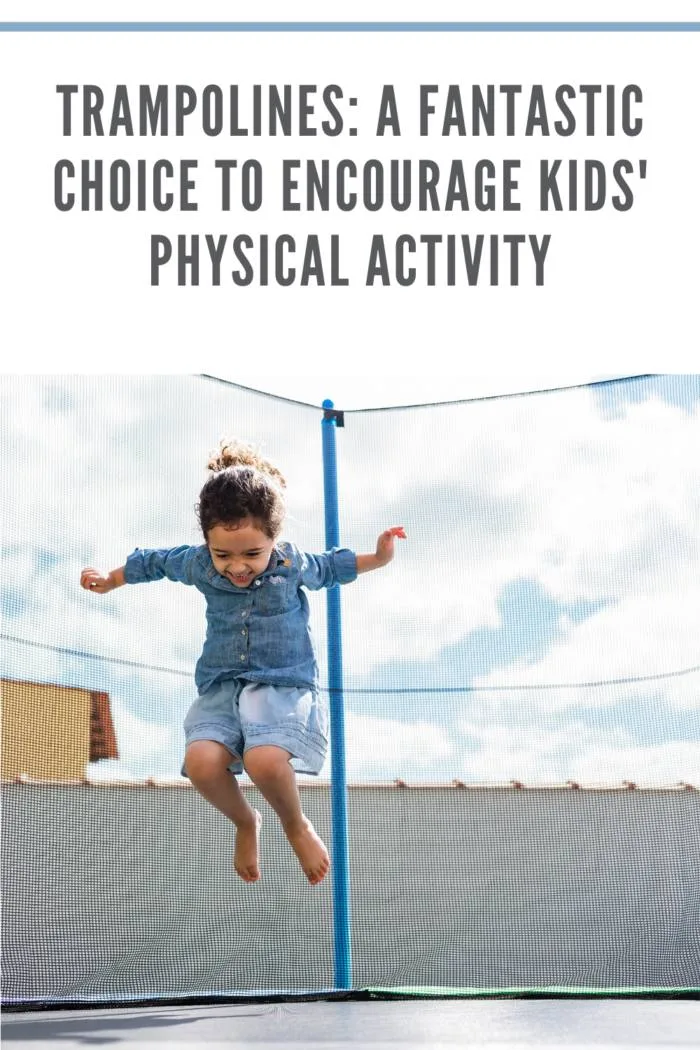
-
Trampolines can encourage your children to play sports.
Children will need to control the movement of their bodies while they are using the trampoline. This is just one way for them to enjoy the equipment better. Since the trampoline will teach your children coordination and muscle control, it’ll be easier for them to play different kinds of sports in the long run. They’ll know how to adjust their bodies accordingly in order for them to function in a new and competitive environment.
Trampolines can serve as a fantastic tool to encourage children to engage in sports and physical activities.
Here’s how trampolines can promote a love for sports:
- Develops physical skills: Trampolining enhances various physical skills such as coordination, balance, agility, and spatial awareness. These skills are transferable to many sports, making children better equipped to participate and excel in activities like gymnastics, diving, basketball, volleyball, and more. The foundational skills developed on a trampoline can give children a head start when they decide to pursue sports.
- Builds core strength: Jumping on a trampoline engages the core muscles, contributing to the development of core strength and stability. A strong core is essential in many sports, as it supports overall body control and balance. With improved core strength, children can perform better in sports that require stability, such as gymnastics, soccer, or martial arts.
- Enhances vertical jumping ability: Trampolines provide an excellent platform for children to practice and improve their vertical jumping ability. The explosive power generated during jumps on a trampoline can transfer to sports like basketball, volleyball, or track and field events like high jump or long jump. Improved vertical jumping ability can give children an advantage in these sports, boosting their confidence and interest in pursuing them.
- Fosters a love for physical activity: Trampolines offer a fun and engaging way to be physically active. By incorporating regular trampolining sessions into their routine, children develop a positive association with physical activity and sports. The joy and excitement experienced while jumping on a trampoline can motivate them to explore other sports and activities, fostering a lifelong love for physical fitness and sports participation.
- Promotes teamwork and competition: Trampolining can be enjoyed individually or in group settings. Participating in group trampolining sessions or friendly competitions encourages teamwork, cooperation, and healthy competition among children. This cooperative and competitive environment can spark an interest in team sports or other competitive activities, as children learn to collaborate, support one another, and strive for personal and team achievements.
By using trampolines as a springboard for physical activity and sports engagement, children can develop skills, strength, and a passion for sports that can carry over into various athletic pursuits throughout their lives.
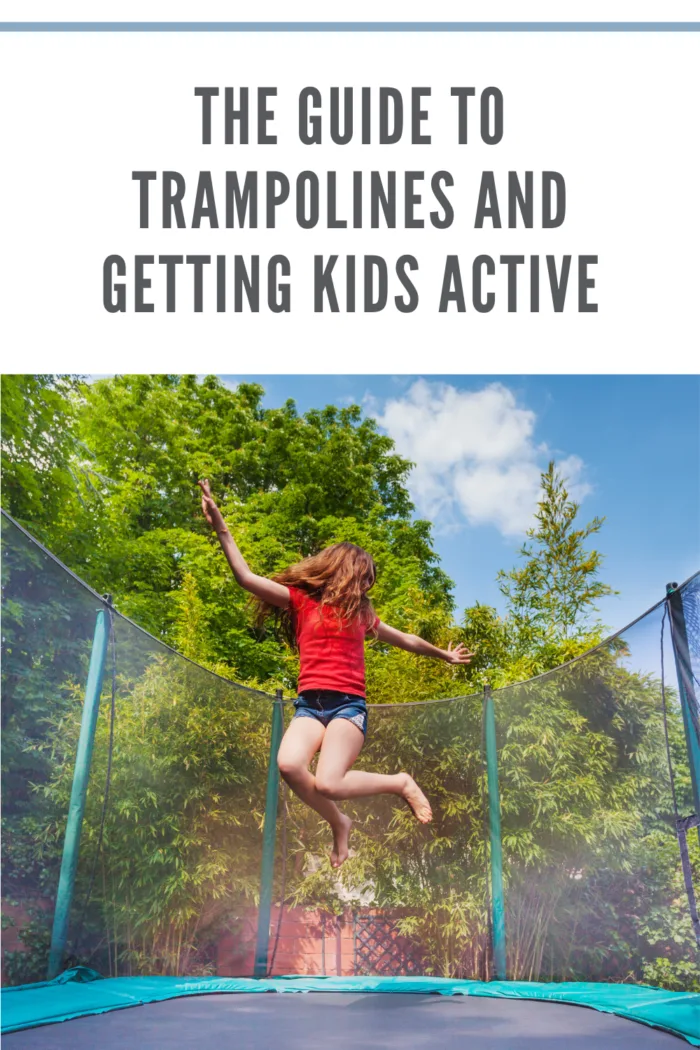
-
Trampolines can improve your children’s flexibility.
For your children to use the trampoline, they have to jump and down. Depending on their age and physical capabilities, they can even learn new tricks in the trampoline. Because of the movement your children will make with this equipment, their flexibility can improve. The action of jumping and down can also strengthen their muscles.
Trampolines can contribute to improving children’s flexibility in the following ways:
- Increased range of motion: Trampolining involves a wide range of movements, including stretching, bending, and reaching. Regular jumping and performing various tricks on a trampoline can help improve joint flexibility and increase the range of motion in children. The dynamic nature of trampoline exercises encourages stretching and extension of muscles, promoting flexibility over time.
- Stretching exercises: Trampolines can be used for specific stretching exercises, which can enhance flexibility. Children can perform gentle stretches on the trampoline surface, utilizing the rebound effect to deepen the stretch. These stretching exercises can target different muscle groups, such as hamstrings, quadriceps, calves, and the lower back, leading to improved flexibility.
- Active warm-up: Before engaging in any physical activity or sports, it’s essential to warm up properly to prevent injuries. Trampolines provide an enjoyable and effective way for children to warm up their bodies before participating in other activities. The bouncing and movement on the trampoline activate muscles, increase blood flow, and prepare the body for more intense physical exertion, promoting flexibility in the process.
- Core and muscle engagement: Jumping and performing tricks on a trampoline engage various muscle groups, including the core muscles. Strengthening the core muscles is crucial for maintaining proper posture and body alignment, which can positively influence flexibility. As children develop stronger core muscles through trampolining, it can contribute to improved flexibility and overall body movement.
- Dynamic movements: Trampolines facilitate dynamic movements, such as bouncing, twisting, and flipping, that require a degree of flexibility. Regularly performing these movements on a trampoline challenges the body’s flexibility and encourages children to push their boundaries gradually. As they continue to practice and attempt different maneuvers, their flexibility can improve as they become more comfortable with these dynamic movements.
It’s important to note that while trampolines can contribute to improved flexibility, children should always engage in proper warm-up exercises and stretching routines to ensure safety and prevent injuries. Additionally, adult supervision and adherence to safety guidelines are crucial when using trampolines to avoid accidents or mishaps.
-
Trampolines can develop your children’s motor skills.
As mentioned, your children will always need to jump while using the trampoline. But this action isn’t just limited to merely jumping. Whenever your children are using the trampoline, both their minds and bodies are functioning in order to maintain coordination and balance. Over time, this can increase their motor skills (NCBI).
Trampolines can play a significant role in developing children’s motor skills.
Here’s how trampolines can contribute to the enhancement of motor skills:
- Balance and coordination: Trampolining requires maintaining balance and coordination while bouncing and performing various movements. Children must control their body movements, adjust their balance, and synchronize their actions with the trampoline’s bouncing motion. Regular practice on a trampoline can improve children’s balance and coordination, which are fundamental motor skills applicable to various physical activities and sports.
- Proprioception and spatial awareness: Trampolining provides an opportunity for children to develop proprioception, which is the awareness of their body’s position in space. The bouncing sensation on a trampoline allows children to become more attuned to their body’s movements, spatial orientation, and limb positioning. This increased proprioceptive awareness can improve their overall motor skills, spatial judgment, and body control.
- Muscle strength and control: Jumping on a trampoline engages different muscle groups throughout the body. Children must exert force and control their movements to achieve desired jumps and perform tricks. This continuous muscle engagement develops strength, particularly in the leg muscles, as well as overall muscle control. Improved muscle strength and control directly contribute to enhanced motor skills.
- Reflexes and reaction time: Trampolining involves quick reactions and reflexive movements to adjust to the changing dynamics of the trampoline. Children learn to respond to the rebounding force, adapt their body posture, and land safely after each jump. These reflexive movements and quick reactions contribute to the development of agility and faster reaction times, essential motor skills for various sports and physical activities.
- Spatial orientation and depth perception: Trampolines offer a unique environment for children to develop spatial orientation and depth perception skills. The varying heights and distances during jumps on a trampoline challenge children’s perception of space and depth. Through repeated practice, they learn to judge distances accurately, make spatial adjustments, and land safely on the trampoline. These skills transfer to other activities, such as sports involving catching, throwing, or navigating obstacles.
Engaging in regular trampolining activities and incorporating diverse movements and challenges can stimulate and improve a range of motor skills in children. It’s important to ensure appropriate safety measures, supervise children during trampoline use, and follow manufacturer guidelines to minimize the risk of accidents or injuries.
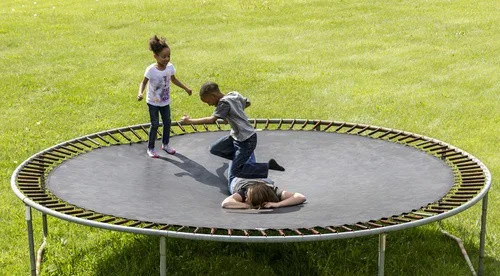
-
Trampolines can become your children’s cardiovascular workout.
Children can easily neglect the importance of exercise when they’re always using their gadgets. Because of the fun they’ll have while using these gadgets, they won’t notice the time they’ve spent with it. Buying a trampoline can help your children become more physically active. When your children jump up and down the trampoline, their heart rate will increase. This can result in a great workout, and your children won’t even notice.
Trampolines can offer an effective cardiovascular workout for children in the following ways:
- Increased heart rate: Jumping on a trampoline is a dynamic and energetic activity that quickly raises the heart rate. The continuous bouncing and movements engage large muscle groups, requiring the heart to pump more oxygenated blood to the working muscles. This increased heart rate provides a cardiovascular workout that strengthens the heart and improves cardiovascular fitness.
- Improved endurance: Trampolining requires sustained effort and stamina. Jumping for extended periods on a trampoline can gradually build children’s endurance levels. As they engage in longer and more intense sessions, their cardiovascular system adapts, leading to improved endurance capacity. Regular trampoline workouts can enhance children’s overall cardiovascular fitness and allow them to participate in other physical activities for longer durations without getting tired quickly.
- Aerobic exercise: Trampolining is considered an aerobic exercise that utilizes oxygen to fuel the body’s energy needs. Aerobic exercises are known to provide numerous cardiovascular benefits, including improved lung function, increased oxygen uptake, and a strengthened cardiovascular system. By engaging in trampoline workouts, children can experience the benefits of aerobic exercise, which positively impact their cardiovascular health.
- Calorie burning: Jumping on a trampoline is a high-energy activity that can help children burn a significant amount of calories. The constant movement and effort involved in trampolining require a considerable amount of energy expenditure. This calorie-burning effect contributes to weight management and overall cardiovascular health, as excess weight can increase the risk of cardiovascular diseases.
- Low-impact exercise: Trampolines offer a low-impact workout, meaning it puts less stress on the joints compared to high-impact activities like running or jumping on hard surfaces. This makes trampolining a suitable cardiovascular exercise option for children who may have joint issues or are looking for a gentler form of exercise. The cushioning effect of the trampoline surface reduces the risk of joint strain or impact-related injuries while still providing an effective cardiovascular workout.
To maximize the cardiovascular benefits of trampolining, it’s important for children to engage in sustained and vigorous jumping sessions. It’s also crucial to ensure safety by using a well-maintained trampoline, implementing appropriate safety measures, and supervising children during their workouts.
-
Trampolines can improve your children’s posture.
When your children regularly use the trampoline, they aren’t only improving their balance and working on their posture. This happens because the trampoline floor is always moving, prompting your children to be aware of the center of gravity. The balance your children will learn while using the trampoline can also be maximized in other activities.
Trampolines can contribute to improving children’s posture in the following ways:
- Core muscle engagement: Trampolining requires active engagement of the core muscles, including the abdominal muscles, lower back muscles, and hip muscles. These core muscles play a crucial role in maintaining proper posture and spinal alignment. Regular use of a trampoline helps strengthen the core muscles, promoting better posture in children.
- Spinal alignment: Jumping on a trampoline involves continuous movements that challenge the spine’s alignment. As children bounce and land, their spine adjusts and adapts to maintain balance and stability. Over time, this can promote better spinal alignment and posture, reducing the risk of developing postural issues such as rounded shoulders or excessive curvatures in the spine.
- Balance and coordination: Trampolining requires maintaining balance and coordination throughout the activity. Children must engage multiple muscle groups simultaneously to execute jumps and perform tricks. This improved balance and coordination translate into better body awareness and postural control. As they learn to control their body movements on the trampoline, they develop better posture habits that carry over into daily activities.
- Strengthening postural muscles: Trampolining engages various muscles in the body, including those responsible for maintaining proper posture. The bouncing movements activate muscles in the back, shoulders, and neck, which are crucial for supporting an upright posture. As children repeatedly engage these postural muscles during trampoline use, they can strengthen and condition them, leading to improved posture over time.
- Correcting postural imbalances: Trampolines can help address postural imbalances by providing a dynamic and supportive surface for movement. As children jump and perform different exercises on the trampoline, it can help correct muscle imbalances and asymmetries that may contribute to poor posture. The controlled movements on the trampoline encourage equal engagement of muscles on both sides of the body, promoting a more balanced and aligned posture.
While trampolines can aid in improving posture, it’s important to note that they should be used in conjunction with other posture-promoting activities and practices. Encouraging children to maintain good posture during everyday activities, providing ergonomic seating and workspaces, and promoting regular physical activity can all contribute to overall posture improvement.
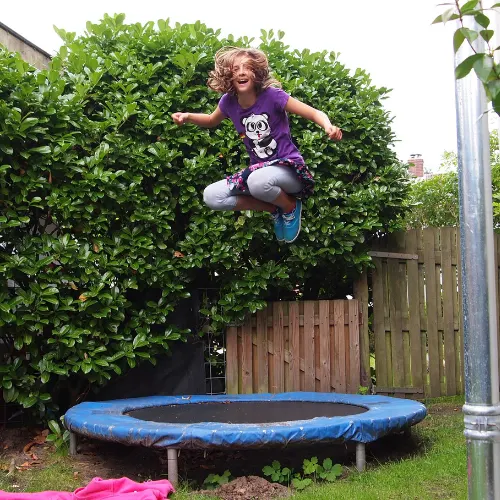
Take Time To Choose
Trampolines can be a useful tool for your children to be active, but you shouldn’t make hasty decisions when buying one. When scouting for trampolines, always check the material used, safety hazards, and if it’s actually appropriate for your child’s age. The more information you know about the trampoline, the easier it’ll be for you to choose one that suits your children’s needs.
When considering purchasing a trampoline for your children, it’s essential to make an informed decision by taking the following factors into account:
- Material and Construction: Carefully examine the materials used in the trampoline’s frame, jumping surface, and safety enclosure, if applicable. Look for durable, rust-resistant frames made from high-quality steel or other sturdy materials. The jumping surface should be made of strong and flexible materials, such as polypropylene or woven fabric, capable of withstanding regular use. Ensure that the safety enclosure, if included, is made of reliable netting that can effectively prevent falls and injuries.
- Safety Features: Prioritize safety when choosing a trampoline for your children. Look for features like padded springs and frame edges to reduce the risk of injuries from accidental falls or contact with the trampoline’s components. A safety enclosure, consisting of a secure netting system, can provide an added layer of protection by preventing children from falling off the trampoline. Additionally, check if the trampoline meets safety standards set by relevant authorities or organizations.
- Age Appropriateness: Consider your child’s age and physical capabilities when selecting a trampoline. Some trampolines are designed specifically for younger children, while others are suitable for older children or even adults. Ensure that the trampoline you choose is appropriate for your child’s age, size, and weight, as this can affect their safety and overall enjoyment. Younger children may require smaller trampolines with lower bounce levels, while older children might benefit from larger trampolines with higher weight capacities.
- Size and Space: Evaluate the available space in your yard or indoor area where you plan to set up the trampoline. Trampolines come in various sizes, so choose one that fits comfortably within your designated space. Remember to account for clearance around the trampoline to ensure safe jumping and landing zones. Consider factors such as overhanging trees, power lines, and other potential hazards when determining the suitable size and location for your trampoline.
- Research and Reviews: Before making a final decision, conduct thorough research on different trampoline brands and models. Read reviews from other customers to gain insights into the product’s quality, safety, and overall performance. Pay attention to feedback regarding durability, customer service, and any potential safety concerns. Gathering as much information as possible will enable you to make an informed choice that meets your children’s needs and safety requirements.
By taking the time to assess these factors, you can select a trampoline that provides a safe and enjoyable experience for your children, promoting physical activity and fun while minimizing the risk of injuries.
Final Thoughts:
Trampolines can be a valuable tool for promoting physical activity, developing motor skills, improving cardiovascular health, enhancing flexibility, boosting self-esteem, and fostering a love for sports in children. By providing a fun and engaging platform for active play, trampolines offer numerous benefits that contribute to children’s overall well-being and development.
However, it’s important to approach trampoline use with caution and prioritize safety. Ensure that the trampoline you choose is of high quality, meets safety standards, and is appropriate for your child’s age and size. Supervision and adherence to safety guidelines are crucial to prevent accidents or injuries.
Incorporating trampolining into a well-rounded approach to physical activity, including other sports and exercises, can provide children with a diverse range of benefits and keep them active and healthy. Encouraging children to explore various physical activities, fostering a positive attitude towards exercise, and providing a supportive and safe environment will contribute to their overall growth and well-being.
Remember to consult with professionals or experts, such as pediatricians or fitness instructors, to ensure that trampoline activities align with your child’s individual needs and capabilities. With the right approach, trampolines can be a fantastic tool to promote physical fitness, fun, and development in children.
